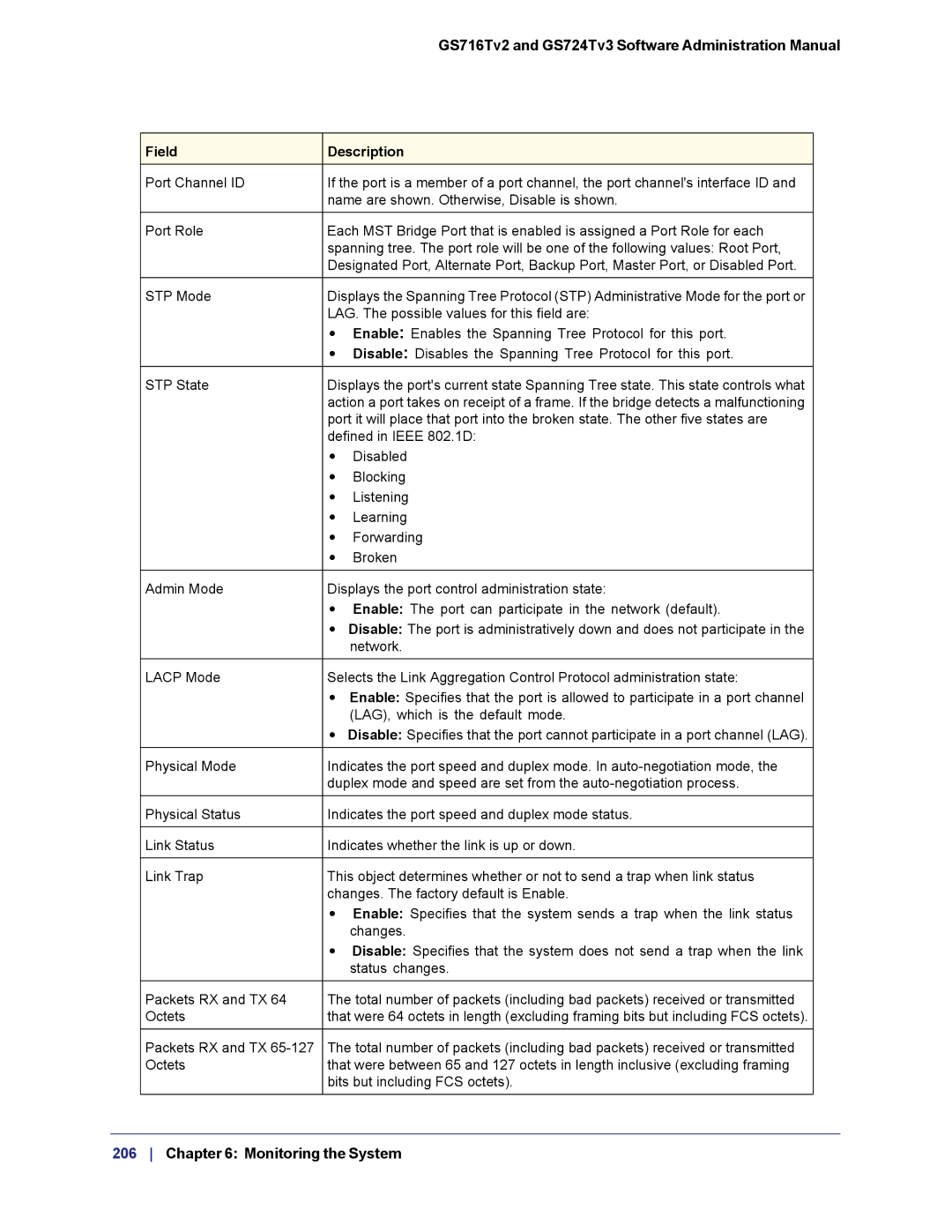
GS716Tv2 and GS724Tv3 Software Administration Manual
Field | Description | |
Port Channel ID | If the port is a member of a port channel, the port channel's interface ID and | |
| name are shown. Otherwise, Disable is shown. | |
|
| |
Port Role | Each MST Bridge Port that is enabled is assigned a Port Role for each | |
| spanning tree. The port role will be one of the following values: Root Port, | |
| Designated Port, Alternate Port, Backup Port, Master Port, or Disabled Port. | |
|
| |
STP Mode | Displays the Spanning Tree Protocol (STP) Administrative Mode for the port or | |
| LAG. The possible values for this field are: | |
| • Enable: Enables the Spanning Tree Protocol for this port. | |
| • Disable: Disables the Spanning Tree Protocol for this port. | |
STP State | Displays the port's current state Spanning Tree state. This state controls what | |
| action a port takes on receipt of a frame. If the bridge detects a malfunctioning | |
| port it will place that port into the broken state. The other five states are | |
| defined in IEEE 802.1D: | |
| • | Disabled |
| • | Blocking |
| • | Listening |
| • | Learning |
| • | Forwarding |
| • | Broken |
Admin Mode | Displays the port control administration state: | |
| • Enable: The port can participate in the network (default). | |
| • Disable: The port is administratively down and does not participate in the | |
|
| network. |
LACP Mode | Selects the Link Aggregation Control Protocol administration state: | |
| • Enable: Specifies that the port is allowed to participate in a port channel | |
|
| (LAG), which is the default mode. |
| • Disable: Specifies that the port cannot participate in a port channel (LAG). | |
Physical Mode | Indicates the port speed and duplex mode. In | |
| duplex mode and speed are set from the | |
|
| |
Physical Status | Indicates the port speed and duplex mode status. | |
|
| |
Link Status | Indicates whether the link is up or down. | |
|
| |
Link Trap | This object determines whether or not to send a trap when link status | |
| changes. The factory default is Enable. | |
| • Enable: Specifies that the system sends a trap when the link status | |
|
| changes. |
| • Disable: Specifies that the system does not send a trap when the link | |
|
| status changes. |
Packets RX and TX 64 | The total number of packets (including bad packets) received or transmitted | |
Octets | that were 64 octets in length (excluding framing bits but including FCS octets). | |
|
| |
Packets RX and TX | The total number of packets (including bad packets) received or transmitted | |
Octets | that were between 65 and 127 octets in length inclusive (excluding framing | |
| bits but including FCS octets). | |
|
|
|
206 Chapter 6: Monitoring the System
